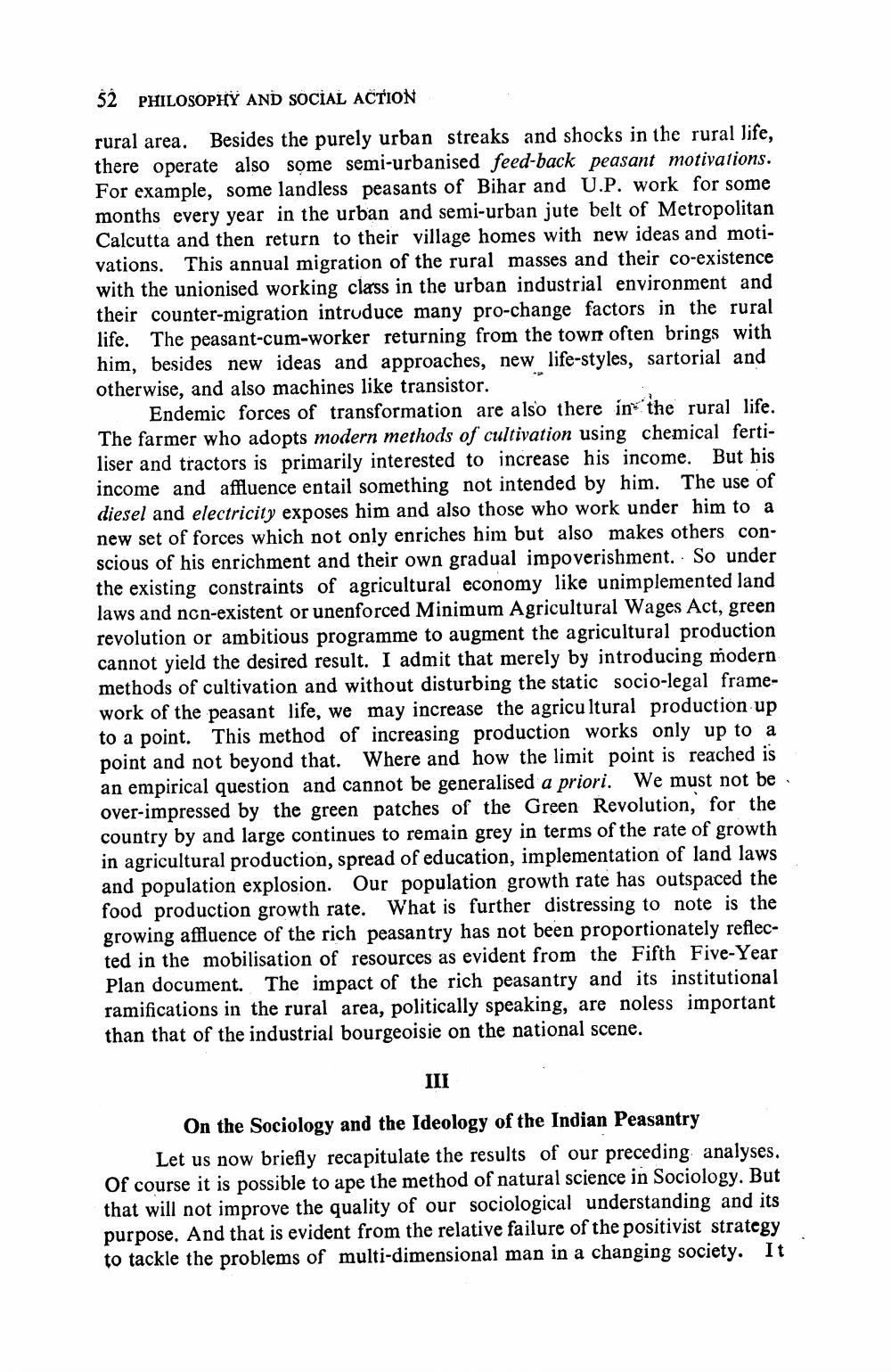________________
52 PHILOSOPHY AND SOCIAL ACTION
rural area. Besides the purely urban streaks and shocks in the rural life, there operate also some semi-urbanised feed-back peasant motivations For example, some landless peasants of Bihar and U.P. work for some months every year in the urban and semi-urban jute belt of Metropolitan Calcutta and then return to their village homes with new ideas and motivations. This annual migration of the rural masses and their co-existence with the unionised working class in the urban industrial environment and their counter-migration intruduce many pro-change factors in the rural life. The peasant-cum-worker returning from the town often brings with him, besides new ideas and approaches, new life-styles, sartorial and otherwise, and also machines like transistor.
Endemic forces of transformation are also there in the rural life. The farmer who adopts modern methods of cultivation using chemical fertiliser and tractors is primarily interested to increase his income. But his income and affluence entail something not intended by him. The use of diesel and electricity exposes him and also those who work under him to a new set of forces which not only enriches him but also makes others conscious of his enrichment and their own gradual impoverishment. So under the existing constraints of agricultural economy like unimplemented land laws and non-existent or unenforced Minimum Agricultural Wages Act, green revolution or ambitious programme to augment the agricultural production cannot yield the desired result. I admit that merely by introducing modern methods of cultivation and without disturbing the static socio-legal framework of the peasant life, we may increase the agricultural production up to a point. This method of increasing production works only up to a point and not beyond that. Where and how the limit point is reached is an empirical question and cannot be generalised a priori. We must not be over-impressed by the green patches of the Green Revolution, for the country by and large continues to remain grey in terms of the rate of growth in agricultural production, spread of education, implementation of land laws and population explosion. Our population growth rate has outspaced the food production growth rate. What is further distressing to note is the growing affluence of the rich peasantry has not been proportionately reflected in the mobilisation of resources as evident from the Fifth Five-Year Plan document. The impact of the rich peasantry and its institutional ramifications in the rural area, politically speaking, are noless important than that of the industrial bourgeoisie on the national scene.
III
On the Sociology and the Ideology of the Indian Peasantry
Let us now briefly recapitulate the results of our preceding analyses. Of course it is possible to ape the method of natural science in Sociology. But that will not improve the quality of our sociological understanding and its purpose. And that is evident from the relative failure of the positivist strategy to tackle the problems of multi-dimensional man in a changing society. It




